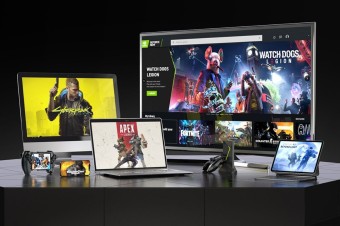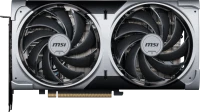Hidden Reserves: Boosting Radeon Graphics Without Overclocking
We independently test the products and technologies that we recommend.

1. What is Radeon Adrenalin

Radeon Adrenalin is AMD's proprietary software that combines drivers and a powerful graphics card management center. It allows you to adjust the frequencies and voltage of the graphics card, enable automatic overclocking, reduce power consumption, enable upscaling, optimize video memory usage, and more. Essentially, it's a universal tool that replaces third-party utilities like MSI Afterburner and CPU-Z, working directly through the driver.
Interest is fueled by the fact that all these upgrades are completely free, work on older generation Radeon graphics cards (but not always), and often bring unexpected benefits. For example, in the March update, in addition to the Radeon Image Sharpening 2 technology, a specialized AI assistant was added to help users solve any AMD/Radeon hardware-related issues. Essentially, it's an LLM similar to ChatGPT, but more local and specialized.
Now let's take a closer look at everything hidden under the hood of Adrenalin.
2. Smart Access Memory (SAM)

Smart Access Memory (SAM) is an AMD technology that allows the CPU to work directly with the entire graphics card memory, without having to process it in tiny 256 MB blocks, as was done before. This approach was justified in the past when VRAM capacities were small. However, now that even budget models are equipped with 8 or 12 GB of memory, the limitation on sequential block processing becomes a bottleneck that slows down both the CPU and the graphics card.
The efficiency of SAM heavily depends on the game. In some projects like Forza Horizon 5, the gain reaches 15-20%, in others, it stays within 3-5%, and somewhere it has no effect at all. As for resolution, SAM performs best at 1080p and 1440p, but in 4K, the effect is somehow less noticeable. In any case, SAM is easy to enable and does not affect the graphics card's temperature, so refusing it would be foolish.
How to enable: first, you need to enter the motherboard's BIOS and activate the Resizable BAR Support and Above 4G Decoding options. This feature is supported by most modern motherboards but may not work on models released before 2020. Resizable BAR Support is usually visible in the main menu of the motherboard, while the Above 4G Decoding option is often hidden in the PCI Subsystem Settings section in Advanced Settings. After activation, save, exit BIOS, and restart the system. Then the Adrenalin driver will ask to restart. Agree, restart, open Adrenalin, find the Smart Technology menu, and enable SAM. Done.
Conveniently, the technology works not only with AMD Ryzen processors but also with modern Intel Core models starting from the 10th generation. The main requirement is the presence of a motherboard with Resizable BAR support and a Radeon 5000 series or later graphics card with RDNA architecture.
3. Radeon Boost

Radeon Boost is another upscaling technology that artificially re-renders images from a lower resolution to a higher one. But unlike FSR, which upscales the entire image, Radeon Boost activates only in dynamics, when objects move very quickly, and the player simply does not notice the lower rendering quality. Overall, this is quite a useful feature for competitive shooters like CS:GO, COD, and Titanfall with unlimited frame rates, where higher FPS is much more critical than image quality.
How to enable: open AMD Adrenalin → Games menu → Graphics card submenu → Radeon Boost. In older versions of Adrenalin, there was a slider for adjusting scaling, and in newer versions, there are 2 options (quality and performance).
4. Radeon Super Resolution

Radeon Super Resolution (RSR) is a fairly simple mathematical upscaler that, like FSR, artificially stretches an image from lower to higher, thereby improving the framerate. RSR is based on the relatively simple first version of FSR and operates at the driver level, yet its rendering quality is rather mediocre, especially on large monitors, so it's more logical to use on weaker graphics cards and games that do not support FSR.
How to enable: open AMD Adrenalin → Games menu → Graphics card submenu → Radeon Super Resolution. Then adjust the upscaler sharpness to your preference, and you're done.
5. HYPR-RX Profiles

AMD regularly devises new game acceleration technologies and constantly changes their names — FSR, RSR, Anti-Lag, Boost, Frame Generation… It all sounds cool, but in reality, not every expert can explain the difference between FSR and RSR. That's exactly why the HYPR-RX system was devised — a universal settings switch that enables several necessary technologies with optimal settings for the given task with just one click.
When HYPR-RX is activated, all major Radeon "accelerators" are enabled: from reducing lag to generating additional frames for smoothness. This can significantly increase FPS and responsiveness, even in old or demanding games. An especially noticeable effect comes from the addition of intermediate frames — the image becomes much smoother, while Anti-Lag minimizes input lag. However, HYPR-RX does not always provide ideal results; for example, the built-in RSR upscaler is inferior to FSR 3 in quality, so it's better to manually disable it in games with their own FSR support.
How to enable: open AMD Adrenalin → Gaming tab → select a game or a global profile → enable HYPR-RX. You can manually adjust settings if necessary, for example, disabling blur or fine-tuning fan operation.
6. Manual Tuning

Adrenalin includes its own alternative to MSI Afterburner, allowing you to build a little more muscle on your graphics card through changes in voltage, TDP, GPU, and video memory frequency. This is no longer a "one-click enhancer" like HYPR-RX or Radeon Boost, but a full-fledged workshop where the result directly depends on the user's accuracy and patience. The advantage of manual settings is that they allow you to extract an additional 2-8% performance from the graphics card, while also optimizing fan operation and balancing heating and power consumption.
The most significant effect is possible when tuning custom versions of cards with good cooling from previous Radeon generations that did not have such strong factory overclocking as Radeon RX 6000 and 7000 series graphics cards. For example, the legendary Radeon RX 5700 XT, after successful parameter tuning, practically catches up with the GeForce RTX 2080, although its original competitor was the junior GeForce 2070 SUPER. For newer graphics cards, manual tuning is more likely to improve the thermal profile and slightly even out frame time.
Overall, this is a fairly complex topic that could warrant a dedicated material. There are many sliders, parameters are interdependent, and all changes need to be thoroughly tested.
7. Conclusion
Even individually, all these features can add some muscle to an existing graphics card without the need to go to the gym and bulk up on chicken breast. Specific figures depend on the particular game, graphics card, and enabled features. For example, Smart Access Memory provides almost +10% in Clair Obscur: Expedition 33 and up to +20% in Forza Horizon 5, but it hardly works in Hogwarts Legacy. Overall, it's almost like a viagra pill for a venerable oldster.
Articles, reviews, useful tips
All materials


















































